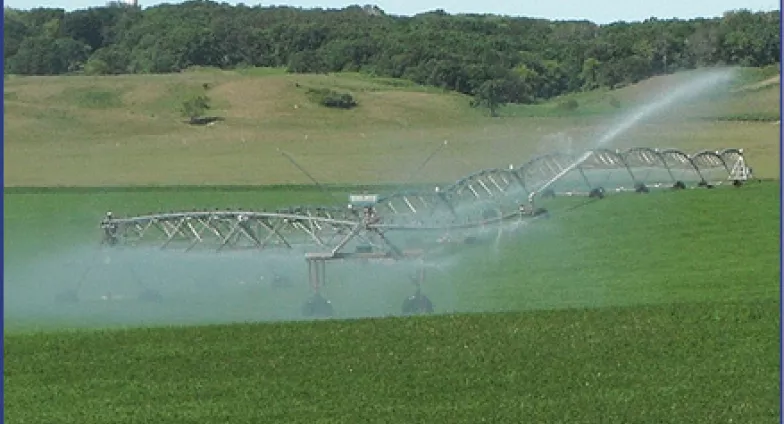Irrigation in North Dakota
Irrigation has always been considered an important part of the social and economic development of North Dakota. Irrigation allows consistent growth of long season crops (corn, alfalfa and potatoes), provides a consistent source of forage for animal agriculture and improves the economic viability of many farms.
Irrigated land is scattered across the state usually located over shallow aquifers. The most common irrigated soils are sandy loams and loamy sands. Improper irrigation can affect the water quality (and quantity) of water in these shallow aquifers. Therefore irrigation water management along with nutrient management are very important.
At the present time there are about 302,000 acres of actively irrigated land in North Dakota where water management can be practiced throughout the growing season. This is slightly more than 1.1 percent of the total cultivated land in the state. Surface irrigation methods such as furrow, border and basin are used on about 35,000 acres and the rest have some type of sprinkler system. More than 265,000 acres are irrigated with center pivot sprinkler systems.
According to the ND Farm Service Agency (FSA) during the 2018 growing season, the predominant irrigated crops were corn (grain and silage) 110,300 acres; soybeans 70,500 acres; small grains (wheat, barley and oats) 33,500 acres; potatoes 28,300 acres; edible beans 16,000 acres; alfalfa and hay 22,100 acres; sugar beets 11,400 acres and 10,000 acres of other crops.
Resources

